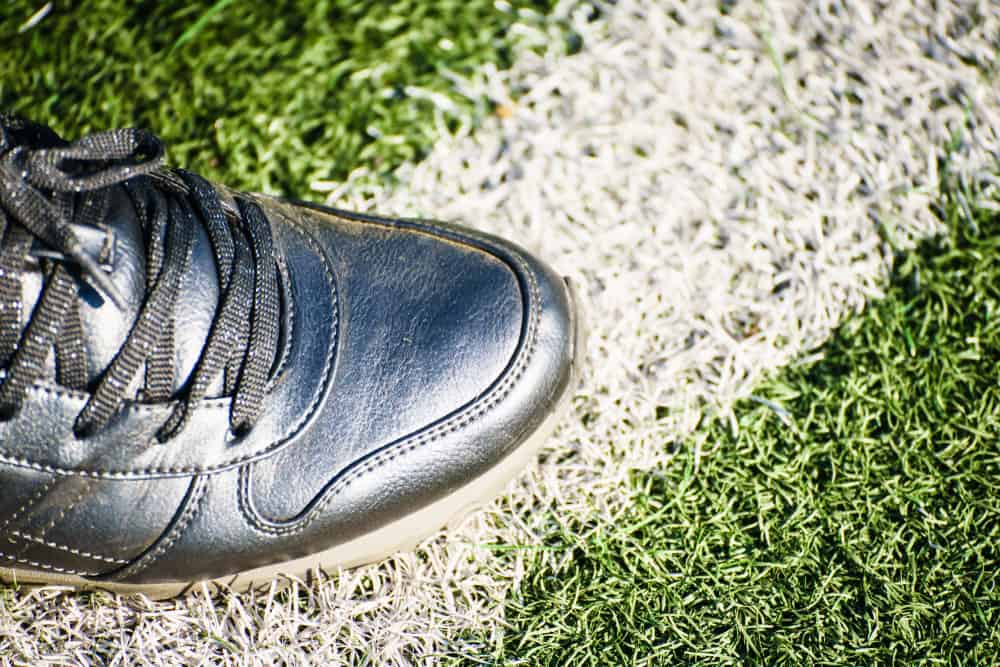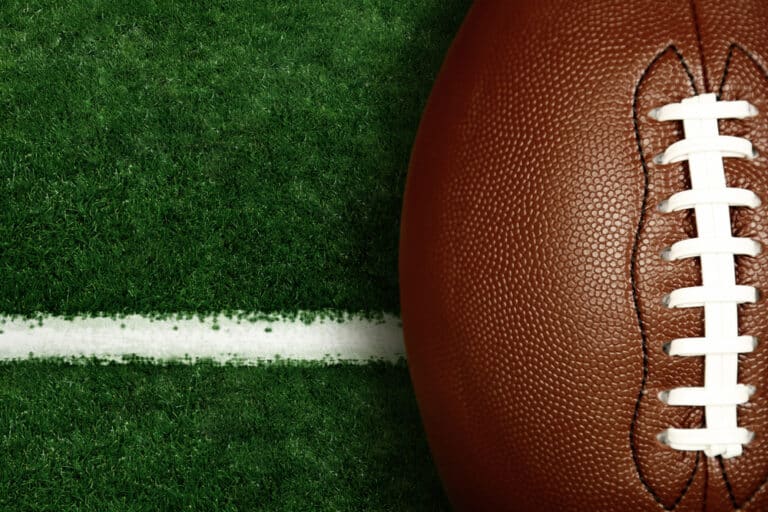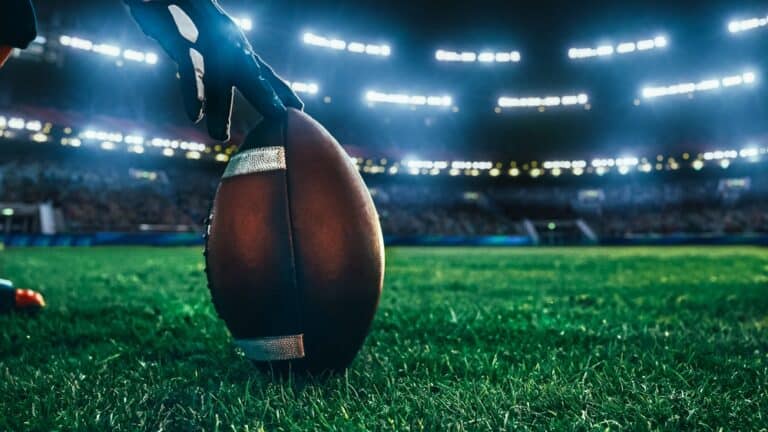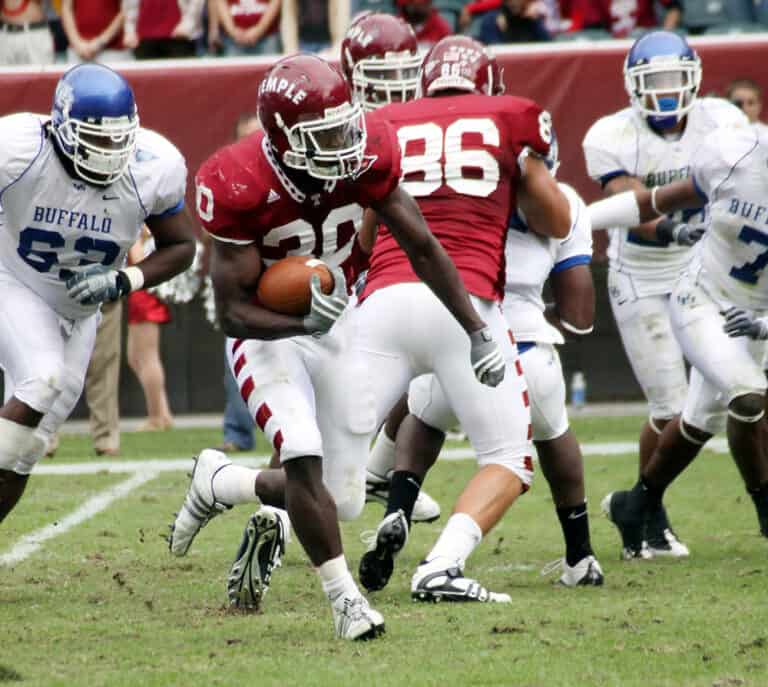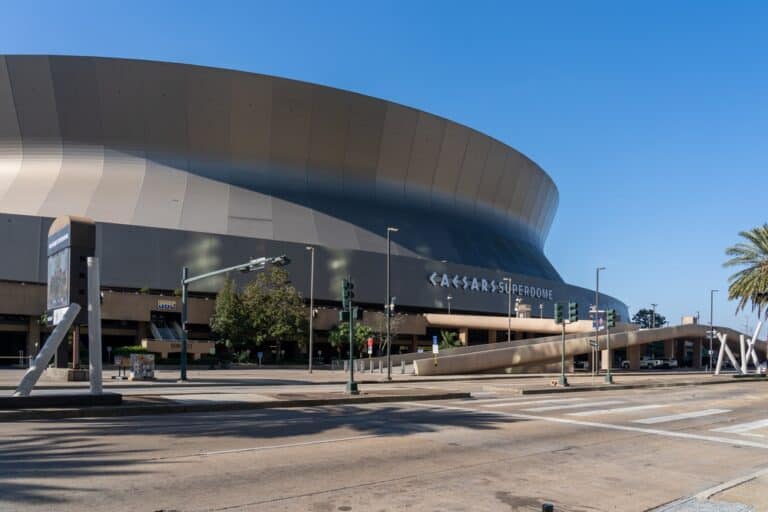How Are Football Fields Painted? (Find Out Here)
Football season is exciting for many fans as they cheer on their favorite team. By the time the fans arrive, players have been preparing for months, and the fields look flawless. But how are football fields painted?
Traditionally, field markings are measured by hand and painted by a manually operated spray-lining cart. Fields can also be marked by fully automated robotic painters using GPS positioning. Line markings are re-painted every two to four weeks, and decorative paints can be washed off after each game.
Painted field markings are the base of most football rules. That means these lines must be painted clearly and accurately for players and referees to exercise good judgment during the game. Let’s look at some of the work and consideration that goes into painting football fields.
Methods For Painting Football Fields
Football fields can either be painted manually, which was the traditional method, or automatically.
Painting a fresh football field may take anywhere from two to twenty hours, depending on whether this is done manually or automatically. First, the grass is cut as short as possible for the paint to reach the soil instead of only covering the grass blades, which could be trampled or cut off. Then the borders and yard lines are measured out and marked, and finally the lines are painted accordingly.
These lines need to be re-painted throughout the rest of the football season as they fade or wear off. Touch-ups are done regularly so the painter can follow the previous faded lines instead of taking the time to re-measure the entire field.
How Are Football Fields Painted Manually?
Manually painting a football field can take up to 20 work hours stretched over a few days. A spray-lining cart must be pushed by hand along the desired lines as a canister sprays the paint out the bottom of the cart. However, most of the working time with this method goes into measuring and marking the lines.
This manual work also requires substantial human resources to cover the entire field. Many people must work together to measure accurately and set up and move string lines along the measurements to follow with the painting carts.
The precision required to keep the lines straight and accurate makes this measurement incredibly tedious and time-consuming when done by hand. This tends to take up too much time when the season gets busy. That’s where automated painting has the upper hand.
How Are Football Fields Painted Automatically?
Automated robotic field painters have relieved the pressure of the football season for many greenkeepers. A football field that once took days to paint can now be completed in just 2.5 hours, drastically improving the turnaround of football field maintenance.
The basic mechanism is much the same as the original cart. The machine carries a paint canister and sprays a solid line out the bottom as the vehicle moves along. This major difference is that these automated painters are self-propelled and move substantially faster than someone pushing a cart.
The machine uses GPS satellite technology to guide a precise, pre-determined painting route. The yard lines, numbers, and coaching areas no longer need to be tediously measured and outlined by hand.
Not only does this method save time, but it also reduces the manpower required to cover one field.
What Kind Of Paint Is Used To Mark Football Fields?
Greenkeepers used chalk to mark football fields in the past because it is harmless to humans and grass, and the white stands out clearly against the green field. The downside to chalk is that it’s easily washed, trampled, or blown away during games. The chalk lines become blurred from the wear and must be re-applied before every game.
Since then, greenkeepers have started using water-soluble paints that are brighter, comparatively more permanent, yet still harmless to the grass and players. Manufacturers supply a white paint concentrate containing white pigment (usually titanium dioxide), a wetting agent, and latex as a binding agent. The paint is then mixed with water before use.
Typically, a stronger concentration of the paint is used for the first marking and painting of the season. After that, the touch-ups are done with a lower concentration to keep the existing lines crisp and clear. The field paint only needs to be re-applied every two to four weeks, depending on how regularly the field is used or mowed.
Which Lines Need To Be Painted On A Football Field?
The markings for a football field include the main playing field of 100 yards, a 10-yard touch-down area at either end, and coaching zones at the center line on either side of the playing field.
The main playing field is divided into yards along the length of the rectangular field. Yards are indicated with short hash marks near the sidelines and center line, and every five yards is marked by a thick line extending across the width of the field.
Every tenth yard is numbered on either side of the field, indicating the distance from the nearest goal line, with 50 yards as the highest number in the middle. Alongside each number is an arrow orientated toward the nearest goal line. These arrows help orient the players on the field as the game progresses.
On the outer line of the touch-down area, two short hash marks indicate the lengthwise middle section of the playing field.
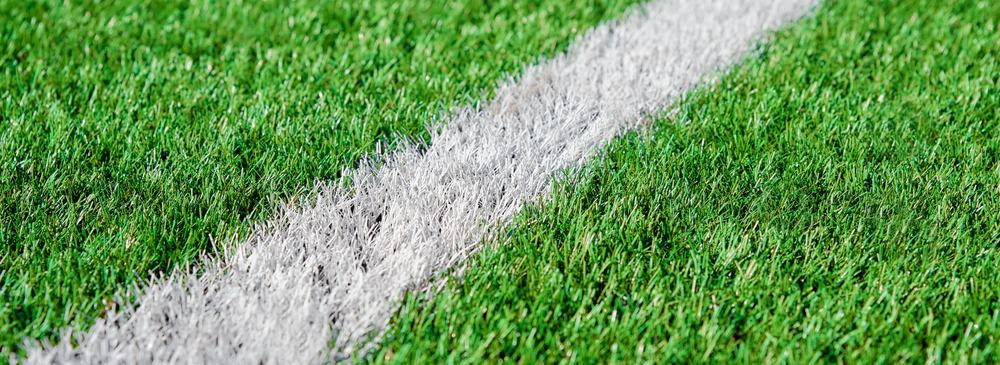
How Is Decorative Football Field Painting Done?
White lines aren’t the only focus of the field painting industry. Many games see the logos of the competing teams or sponsoring agencies on the field along with the marked boundaries. These logos are painted along stencils or freehand with a smaller, one-wheel version of the spray-lining cart.
These decorative, colorful paints are based on various non-toxic organic pigments. Organic pigments were originally derived from various plant or animal materials but can now be synthetically recreated to make the manufacturing process cheaper and more efficient.
Over the years, manufacturers have developed temporary, removable field paints that look as clear as the white marking lines. These temporary paints are durable against trampling players and pouring rains yet easily removed with high-pressure mineral water and light brushing. This removable paint enables the greenkeepers to decorate individually for consecutive games without damaging the turf.
Conclusion
Painting and maintaining a football field for a playing season takes a lot of work. To keep the field markings bright and accurate, lines are diligently measured and continually re-painted. The brightness and longevity of the marked lines also call for robust paint designed for the purpose.
Measuring, marking, and painting football fields is laborious and time-consuming. Fortunately, automated machines are available to get the job done much quicker.

